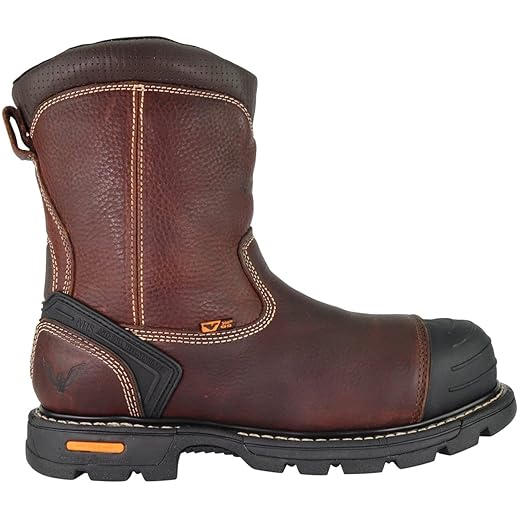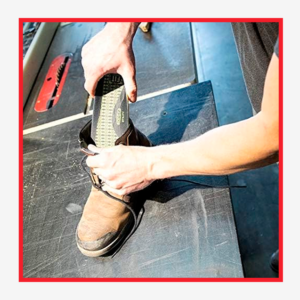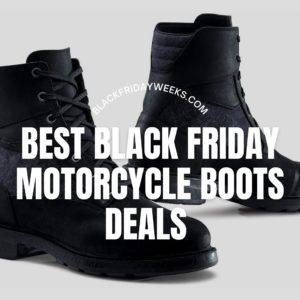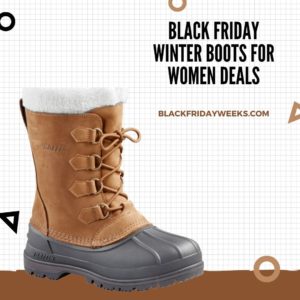Slip-on work boots are a type of footwear designed for ease of wear and convenience in various work environments. Unlike traditional lace-up boots, slip-on boots typically feature an elastic side panel, pull tabs, or other mechanisms that allow the wearer to easily slide their feet into the boots without the need for laces. These boots are known for their quick on-and-off functionality, making them a popular choice for workers who require efficiency and practicality.
Key features of slip-on work boots include:
- Convenience: Slip-on boots eliminate the need for time-consuming lacing, providing a quick and effortless way to put on and remove footwear.
- Elastic Side Panels: Many slip-on boots incorporate elastic side panels (commonly known as Chelsea boots) that stretch to accommodate the foot during entry and then return to their original shape for a snug fit.
- Pull Tabs: Some slip-on boots include pull tabs at the front or back of the boot, aiding in the process of pulling the boots onto the feet.
- Variety of Styles: Slip-on work boots come in various styles, including steel-toe options for added protection, waterproof versions for wet conditions, and those with additional features such as insulation for cold environments.
- Comfort: Many slip-on work boots are designed with comfort in mind, featuring cushioned insoles, supportive midsoles, and materials that provide flexibility and breathability.
- Versatility: These boots are suitable for a range of industries, including construction, manufacturing, agriculture, and other workplaces where durability and ease of use are essential.
While slip-on work boots offer convenience, it’s important to ensure that they provide the necessary safety features and meet the requirements of your specific work environment. Consider factors such as toe protection, slip resistance, and any other safety standards relevant to your job when selecting slip-on work boots.
Are slip on boots good for work?
Slip-on boots can be suitable for work, depending on the nature of your job and the specific requirements of your work environment. Here are some factors to consider when determining if slip-on boots are a good choice for your work:
- Convenience:
- Quick On-and-Off: Slip-on boots are known for their convenience, allowing for quick on-and-off wear. If you need to frequently remove and put on your boots during the workday, slip-on boots can save time compared to lace-up alternatives.
- Work Environment:
- Indoor Work: Slip-on boots are often favored in indoor work environments where the risk of debris entering the boots is lower. They are commonly used in industries like healthcare, hospitality, and offices.
- Outdoor Work: For outdoor work, especially in construction, manufacturing, or agriculture, the suitability of slip-on boots depends on the specific safety features required for the job.
- Safety Features:
- Toe Protection: If your work involves hazards to the toes, such as heavy equipment or falling objects, ensure that the slip-on boots provide adequate toe protection, such as steel or composite toe caps.
- Slip Resistance: Look for slip-on boots with slip-resistant outsoles if you work in environments where floors may be wet or slippery.
- Durability:
- Quality Construction: Consider the durability of the slip-on boots. Look for well-constructed boots with reinforced seams and durable materials that can withstand the demands of your work environment.
- Comfort:
- Insoles and Support: Choose slip-on boots that offer comfort and support. Look for features like cushioned insoles, arch support, and materials that promote breathability.
- Regulatory Compliance:
- Safety Standards: Ensure that the slip-on boots meet or exceed any safety standards or regulations relevant to your industry. Some jobs have specific requirements for footwear safety.
- Weather Conditions:
- Waterproofing: Consider the weather conditions of your work environment. If you work in wet or rainy conditions, opt for slip-on boots with waterproof or water-resistant features.
- Insulation:
- Cold Environments: If you work in colder environments, choose slip-on boots with insulation to provide warmth during colder seasons.
Ultimately, the suitability of slip-on boots for work depends on the specific demands of your job. Assess the safety features, comfort, and durability of the boots in relation to your work environment, and ensure that they meet any regulatory requirements for your industry. If in doubt, consult with your employer or safety regulations to make an informed decision.
How are slip on boots supposed to fit?
Proper fit is crucial for slip-on boots to ensure comfort, support, and safety. Here are some guidelines on how slip-on boots are supposed to fit:
- Snug, but Not Tight:
- Slip-on boots should fit snugly around your foot and ankle to provide support and stability. However, they should not be so tight that they cause discomfort or restrict movement.
- Heel Placement:
- The heel of your foot should sit securely in the heel cup of the boot. It should not lift up or slide around when you walk. A secure fit in the heel is essential for preventing blisters and maintaining stability.
- Toe Room:
- There should be enough room in the toe box for your toes to wiggle comfortably. Your toes should not be cramped or pressed against the front of the boot, as this can lead to discomfort and potential foot issues.
- Arch Support:
- The arch of your foot should be supported by the insole of the boot. Ensure that the arch support aligns with the natural curve of your foot to provide adequate support.
- Width:
- Consider the width of the boots. They should be wide enough to accommodate the natural width of your foot without causing pressure points or pinching. If the boots are too narrow, it can lead to discomfort and foot problems.
- Secure Fit Across the Instep:
- The part of the boot that covers the instep (the top part of your foot) should fit snugly but not overly tight. This ensures a secure fit without cutting off circulation.
- No Slipping or Rubbing:
- When walking, your foot should not slide forward or sideways inside the boot. If you experience rubbing or friction on any part of your foot, it may indicate an improper fit that can lead to blisters or discomfort.
- Consider Socks:
- Try on the boots with the type of socks you intend to wear during work. This ensures that the fit is accommodating with the additional thickness of the socks.
- Test the Fit by Walking:
- Walk around in the boots to assess how they feel during movement. Pay attention to any areas of discomfort, rubbing, or instability, as these issues may indicate an improper fit.
- Check for Adequate Support:
- Ensure that the boots provide the necessary support for your arches, ankles, and overall foot structure. This is particularly important if you have specific foot conditions or require orthopedic support.
If possible, try on slip-on boots in-store and walk around to assess the fit before making a purchase. If buying online, check the manufacturer’s sizing chart and read customer reviews to determine if the boots run true to size. Remember that an accurate fit contributes to both comfort and safety, especially in work environments where supportive footwear is crucial.
How to choose the best slip on work boots
Choosing the best slip-on work boots involves considering several factors to ensure they meet your specific needs and the requirements of your work environment. Here are some key considerations to help you make an informed decision:
- Safety Features:
- Toe Protection: If your work involves potential hazards to your toes, such as heavy objects or machinery, look for slip-on boots with steel or composite toe caps for added protection.
- Slip Resistance: Check for slip-resistant outsoles, especially if you work in environments where floors may be wet or slippery.
- Comfort and Support:
- Insoles and Cushioning: Look for boots with comfortable insoles, arch support, and adequate cushioning. Some boots feature removable insoles, allowing you to customize them or replace them with orthotic insoles if needed.
- Materials: Consider the materials used in the construction of the boots. High-quality leather or synthetic materials can provide durability and breathability.
- Durability:
- Stitching and Construction: Inspect the stitching and overall construction of the boots. Well-constructed boots with reinforced seams are likely to be more durable and withstand the rigors of your work environment.
- Ease of Wear:
- Elastic Side Panels or Pull Tabs: Evaluate the design features that facilitate easy on-and-off wear. Elastic side panels, commonly found in Chelsea-style boots, and pull tabs can enhance the convenience of slip-on boots.
- Waterproofing:
- Work Environment: If you work in wet or rainy conditions, consider slip-on boots with waterproof or water-resistant features to keep your feet dry.
- Insulation:
- Cold Environments: If you work in cold environments, choose boots with insulation to provide warmth and comfort during colder seasons.
- Safety Standards:
- Industry Requirements: Be aware of any safety standards or requirements specific to your industry. Ensure that the slip-on boots you choose meet or exceed these standards.
- Brand Reputation:
- Reviews and Ratings: Research the reputation of different brands and read reviews from other workers to get insights into the performance and durability of specific slip-on work boots.
- Sizing and Fit:
- Try Before Buying: Whenever possible, try on the boots before purchasing to ensure a proper fit. If buying online, check sizing charts and reviews to determine if the boots run true to size.
- Budget:
- Balancing Cost and Quality: While budget is a consideration, prioritize quality and features that align with your needs. Investing in durable and well-made slip-on work boots can pay off in the long run.
Remember to assess the specific demands of your work environment and choose slip-on work boots that provide the necessary safety features, comfort, and durability for your job.
Related Posts
How to find the best insoles for work boots
Insoles for work boots are removable footbeds designed to provide...
Read MoreWhich work boots last longest?
Work boots are specialized footwear designed to provide protection and...
Read MoreBest Black Friday Motorcycle Boots Deals
On Black Friday, motorcycle boot enthusiasts can take advantage of...
Read MoreBlack Friday Winter Boots for Women Deals
If you’re trying to raise your new-season footwear game, Black...
Read MoreProducts recommended in the post contain affiliate links. We may receive a commission when you buy something through our posts.
Why Trust Us
You will find what you are looking for at Black Friday Weeks. From classic to luxury brands, you'll find both. We will help you to select appliances that fit your needs, budget and lifestyle. Whether you want to stop by to learn more — or plan to make a major purchase — we’ll treat you like family and assist you every step of the way. Shop with us today to receive friendly and experienced help along the way.















